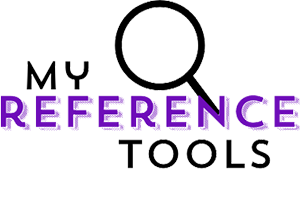Quarterly Smart Money Moves for Professionals

Managing your finances wisely is more than a one-time checkup at tax time. Today’s professionals face a fast-evolving financial landscape—with fluctuating markets, rising living costs, and career changes all part of the terrain. The solution? Treat your financial life the way successful companies manage theirs—with regular quarterly reviews and adaptive strategies.
This guide outlines the essential smart money moves to make each quarter. Regularly checking in on your financial progress, adjusting your strategies, and acting with intention will set you up for both immediate and long-term success.
Why Professionals Need Quarterly Financial Checkups
Annual financial planning is helpful, but it often leaves you reacting to oversights after the fact. Quarterly money moves provide you with the agility to:
- Catch and correct small issues before they escalate
- Take advantage of timely opportunities
- Track progress toward your short-term goals
- Stay adaptable in uncertain economic conditions
For professionals balancing demanding careers and personal lives, quarterly reviews are about working smarter, not harder. They give your financial strategy rhythm, discipline, and measurable momentum.
Quarter One Review Conduct Your Fiscal Fitness Assessment
Start the year from a position of knowledge. This is your opportunity to establish a baseline and prepare for the months ahead.
1. Refresh Your Financial Goals
- Review goals set the previous year. Are they still relevant?
- Update or refine ambitions based on changes in your life or career.
- Establish key financial metrics to track progress.
2. Analyze Your Cash Flow
- Compile your income streams, including salary, bonuses, side gigs, and passive income.
- Identify all fixed and variable expenses. Look for sneaky subscriptions or unnecessary expenditures that add up.
- Calculate your savings rate; aim for at least 20% of net income going toward savings or investments.
3. Review Debt and Credit
- List all debts, their interest rates, and repayment status.
- Develop a plan for paying down high-interest debt first.
- Check your credit report and address any discrepancies.
4. Take Advantage of Early-Year Opportunities
- Contribute to tax-advantaged accounts (IRAs, 401(k)s, HSAs) early. Investment returns compound over time, so starting early gives your money a head start.
- Maximize employer matches in retirement accounts, if available.
5. Assess Insurance Coverage
- Review health, disability, life, home, and auto insurance for coverage adequacy.
- Make adjustments if you’ve had significant life events (marriage, children, new home).
Quarter Two Review Optimize Your Strategy for Growth
The second quarter is the perfect time to ramp up your efforts, address barriers, and explore new opportunities for wealth growth.
1. Revisit Budget and Spending
- Compare Q1 spending against your goals. Did you stay on track? Identify categories where costs crept up.
- Adjust your budget to reflect seasonal changes (e.g., summer travel, kids’ activities).
2. Boost Emergency Savings
- Ensure you have three to six months’ worth of expenses in an accessible, interest-bearing account.
- If you dipped into savings for a major purchase or emergency, begin the process of replenishment.
3. Review Investment Allocation
- Assess your current mix of stocks, bonds, and other assets.
- Rebalance your portfolio as needed to maintain your desired risk profile.
- Consider new investment vehicles, such as real estate or specialty funds, if they align with your risk tolerance and goals.
4. Mid-Year Tax Planning
- Consult your accountant or use reputable software to estimate year-to-date tax liability.
- Adjust withholdings if necessary to avoid surprises or penalties.
- Consider charitable donations or other deductions now, rather than rushing at year-end.
5. Explore Professional Development
- Set aside funds for continuing education, certifications, or conferences. Investing in your skills can yield significant long-term financial returns.
- If you received a raise or bonus, increase your savings or investment contributions accordingly.
Quarter Three Review Safeguard and Adjust for Uncertainties
Summer brings both opportunities and distractions. This period is ideal for strengthening your financial foundation and preparing for impending obligations.
1. Evaluate Major Upcoming Expenses
- Review upcoming costs, such as property taxes, tuition, or travel.
- Start setting aside funds to ensure these costs don’t disrupt your overall financial plan.
2. Protect Your Identity and Assets
- Update passwords and enable two-factor authentication on all financial accounts.
- Review beneficiary information on insurance and retirement accounts.
- Consider increasing insurance for valuables or acquiring umbrella coverage for added liability protection.
3. Audit Your Subscriptions and Recurring Expenses
- Take advantage of downtime to review recurring bills (software, streaming, gym memberships).
- Cancel or negotiate better rates on those you no longer need.
4. Reassess Goals and Progress
- Are you on pace to reach your annual goals? If so, can you aim higher? If not, what changes are needed right now?
- Schedule a check-in with a financial advisor, especially if your situation has changed.
5. Family and Estate Planning
- Review or update wills, powers of attorney, and advance directives, especially after major life changes.
- Ensure all important documents are securely stored and accessible to loved ones if needed.
Quarter Four Review Prepare and Plan for Next Year
The end of the year is crunch time for professionals. Smart moves now set the stage for a strong finish and a better start next year.
1. Maximize Year-End Tax Strategies
- Top off contributions to retirement accounts before the deadline.
- Use up any flexible spending account (FSA) balances to avoid forfeiture.
- Harvest investment losses to offset capital gains, but consult a tax professional for best practices.
2. Review Employer Benefits
- Evaluate open enrollment options for health insurance, flexible spending, or other workplace perks.
- Consider enrollment in supplemental insurance or benefits like legal services.
3. Plan Charitable Giving
- Make charitable donations now for potential tax deductions this year.
- Review donor-advised funds or non-cash contributions for greater impact.
4. Reflect and Set New Financial Goals
- Review your progress on goals set in Q1.
- Celebrate wins and learn from challenges.
- Draft new goals and strategies for the upcoming year, incorporating lessons learned.
5. Schedule A Year-End Financial Review
- Meet with your financial advisor, accountant, or a trusted mentor to review your entire year.
- Ensure you’re ready for whatever opportunities and challenges lie ahead.
Habits to Maintain Quarterly
- Automate where possible. Use automatic transfers for savings, debt repayment, and investments to avoid missed opportunities.
- Stay informed. Regularly read reputable financial news sources to stay aware of changes that could impact your money.
- Keep learning. Pursue a new book, course, or podcast on personal finance each quarter to sharpen your skills and stay inspired.
Quarterly Checklist
Here’s a streamlined checklist to guide your quarterly reviews:
- Review and reset goals if needed
- Track spending and update your budget
- Review debt repayment plans, interest rates, and credit report
- Rebalance and diversify investments
- Check and update tax planning strategies
- Reevaluate insurance and employer benefits
- Audit recurring expenses and subscriptions
- Secure sensitive documents and update passwords
- Schedule meetings with financial advisors
- Celebrate progress
Smart Money Moves in Action Scenario
Meet Maya, a marketing manager balancing a busy job and a growing family. She used to dread “money talks,” but adopting quarterly reviews transformed her finances:
- Quarter 1: She identified and canceled $70/month in unused subscriptions, freeing nearly $850 a year. She also increased her IRA contributions in January to get more out of compounding interest.
- Quarter 2: Maya checked her investment allocation and switched to a diversified portfolio, which better matched her risk tolerance.
- Quarter 3: After a summer move, she updated her insurance coverage and changed beneficiaries on her retirement accounts.
- Quarter 4: She maxed out her workplace 401(k), repositioned year-end charitable giving, and booked a review with her advisor for a fresh start.
Quarterly check-ins helped Maya Take Control, Reduce Stress, and Achieve Tangible Progress, all while balancing her career and family with confidence.
Final Thoughts Making Quarterly Reviews a Habit
Financial independence doesn’t happen by accident. It comes from small, intentional actions repeated over time.
Quarterly financial checkups put you in control and give you clarity on your path. By consistently reviewing, adjusting, and setting new goals, you’re safeguarding your financial future and setting the stage for steady growth even during career pivots or market shifts.
Make your financial strategy a living, breathing part of your professional life. Calendar these check-ins, treat them as non-negotiable appointments, and watch your net worth, peace of mind, and confidence flourish, quarter by quarter.
Remember: Smart money moves don’t need to be complex, but they do need to be consistent. Start your first quarterly review this week and take that step toward lasting financial well-being.



